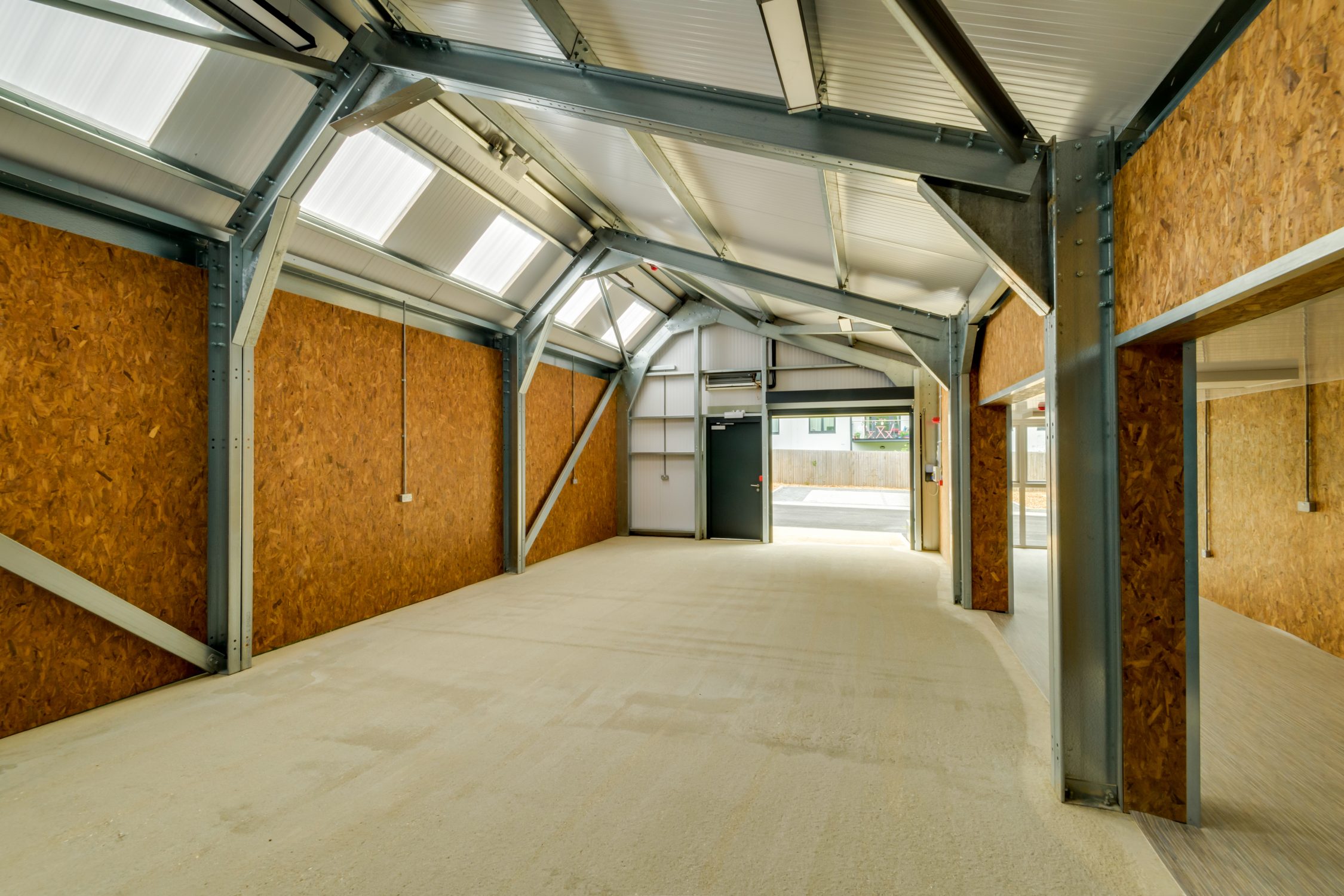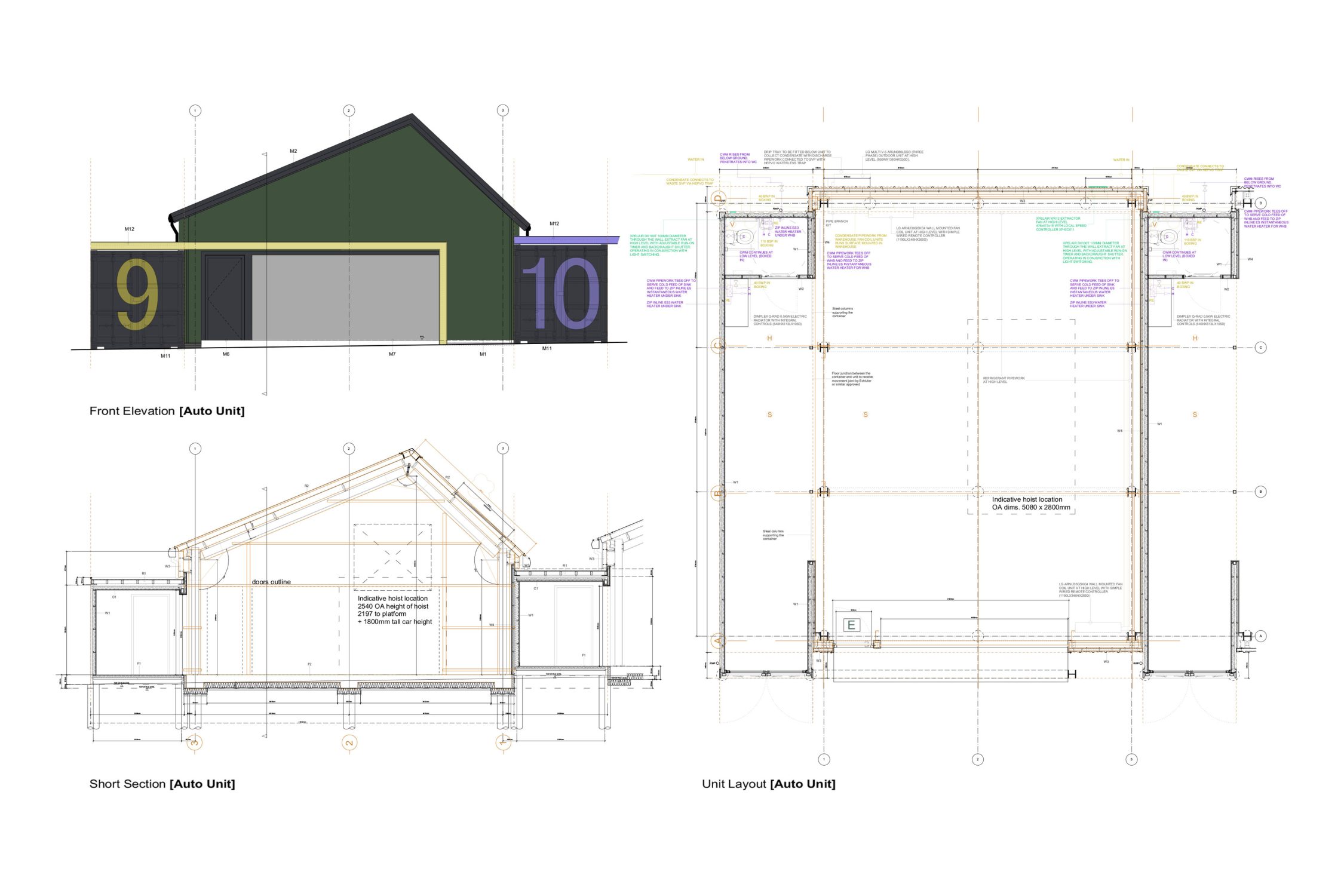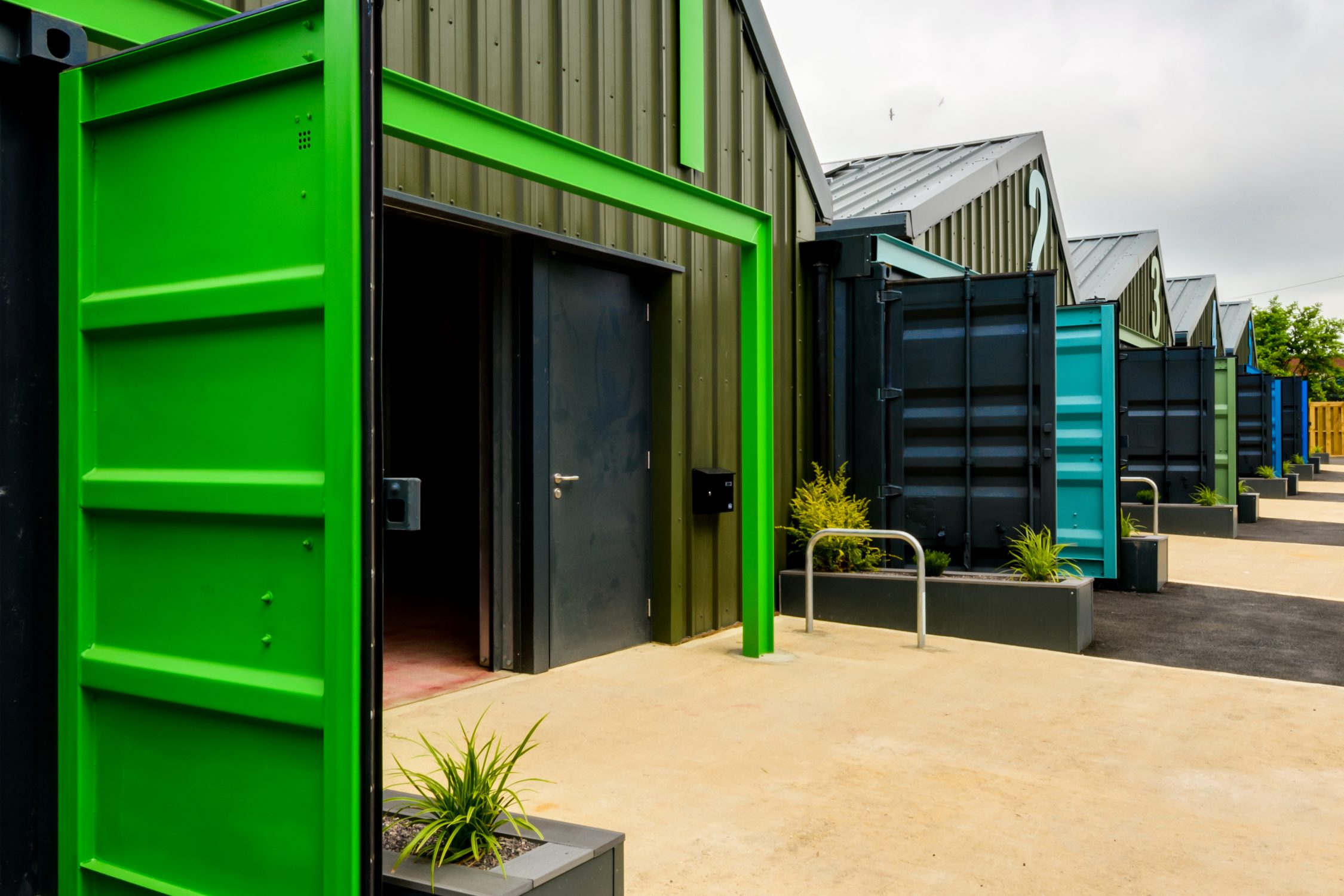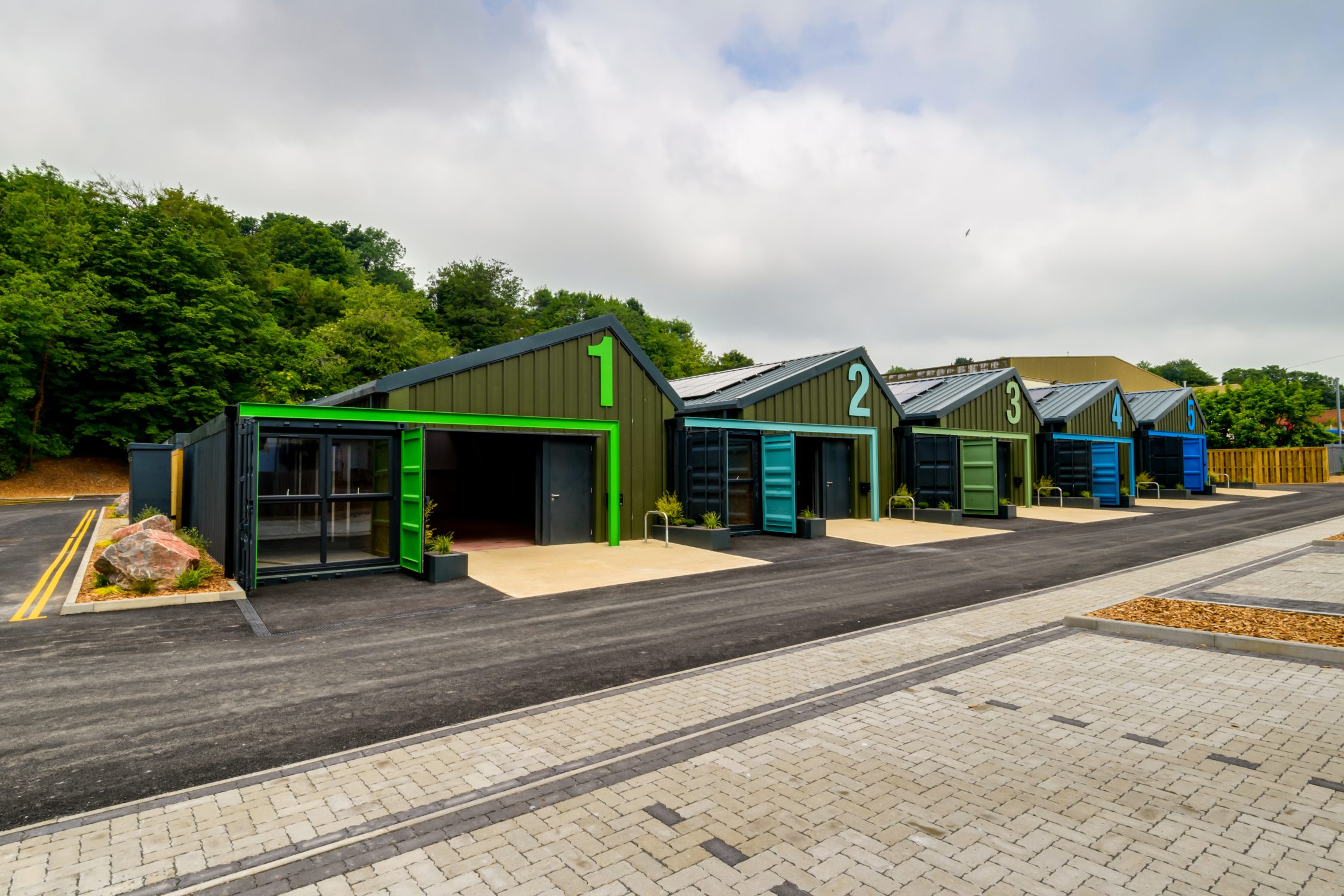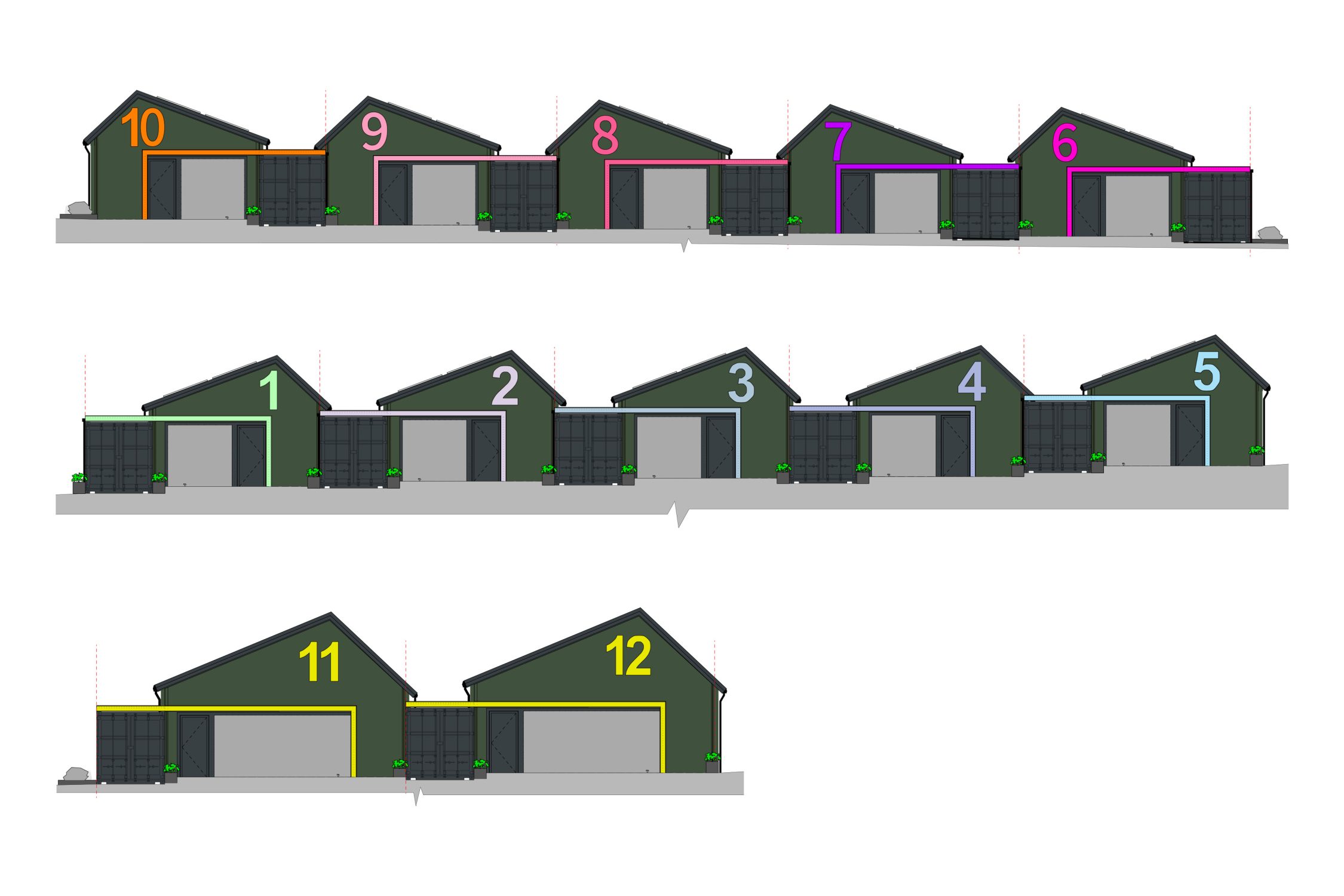SERVICES PROVIDED
Stickland Wright developed this part of a larger consented scheme. We altered the original design proposals to embrace modular and factory built off-site solutions. We took two typically ‘off-the-shelf’ components – a container and portal frame unit – then combined them with design features which also sign post their entrance and individuality.
Our experts who lead our SW+ service are well versed in modular construction. In this instance we need to fuse together two methods: that of the container with that of the portal warehouse frame. These required novel solutions at the junctions and very careful setting out. As always with off-site solutions, solid pre-construction collaboration is key.
Low Energy Design and early consideration of building orientation was key to the success of this scheme. Maximised north light and roof shape minimised the need for internal daytime illumination. The asymmetric roof composition also offered a much larger surface area for photovoltaic panels at an optimal pitch and orientation to boost their efficacy.


